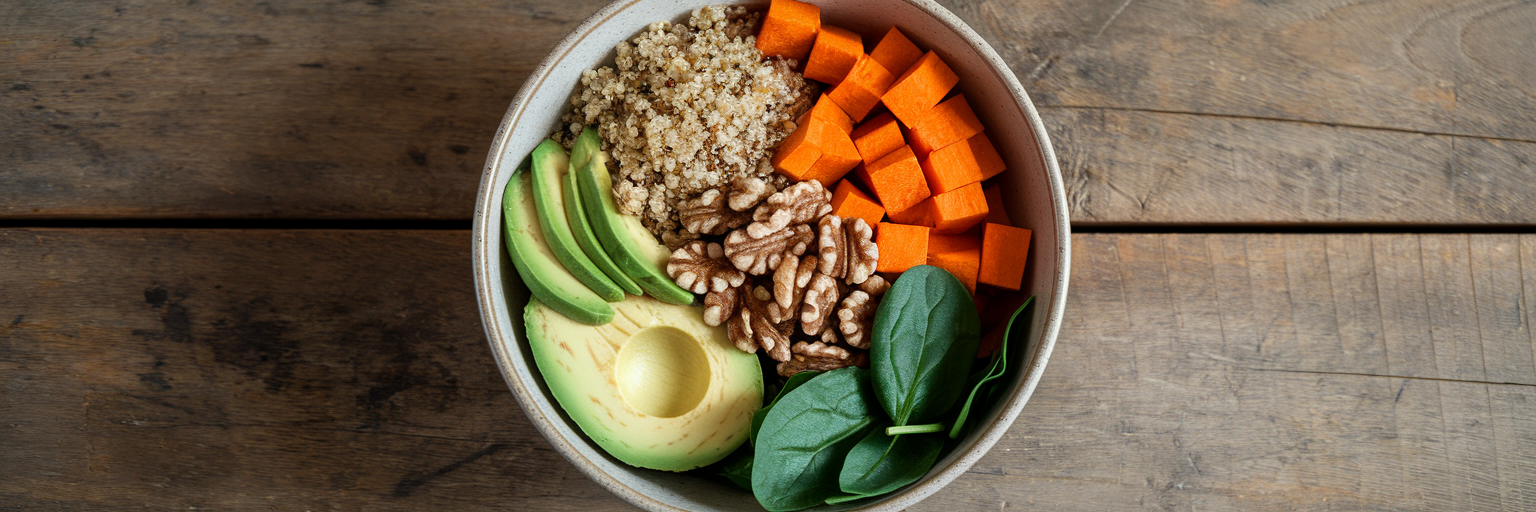Why Your Vegan Diet Needs a Macro Plan
If you're committed to a vegan lifestyle and your fitness, you're already putting in serious work. You're crushing it in the gym and being mindful in the kitchen. But have you ever felt like you could be getting more out of your efforts? That's where macronutrient balancing comes in.
Think of your body like a high-performance construction project. The three macronutrients—protein, carbohydrates, and fats—are your essential crew.
- Protein is your team of building blocks, responsible for repairing and building muscle tissue after a tough workout.
- Carbohydrates are your premium fuel source, giving you the immediate energy needed to power through that extra set or final mile.
- Fats are the essential maintenance crew, supporting hormone production, absorbing vitamins, and keeping everything running smoothly behind the scenes.
A vegan diet is incredibly powerful, but to truly support your fitness ambitions, it requires a smart approach. Simply eating plant-based isn't enough; you need a plan to ensure you're getting the right amount of each macro. This guide will give you a clear, step-by-step way to optimize your plant-based diet for your specific goals.
Calculating Your Personal Protein Target

So, how much protein do you actually need? The answer isn't one-size-fits-all. Your ideal protein intake depends on your body weight, how active you are, and what you're trying to achieve, whether it's building strength or improving endurance.
A widely accepted guideline for active individuals is to consume between 1.2 to 2.0 grams of protein per kilogram of body weight each day. Let's break down how to calculate macros vegan style with a simple example. If you weigh 150 pounds:
- First, convert your weight to kilograms by dividing by 2.2. So, 150 lbs ÷ 2.2 = 68 kg.
- Next, multiply your weight in kilograms by the protein range.
- For general fitness and endurance: 68 kg x 1.2 g = 82 g of protein per day.
- For significant muscle gain: 68 kg x 2.0 g = 136 g of protein per day.
If your goal is building serious muscle, aim for the higher end of that range (1.6–2.0 g/kg). If you're more focused on endurance activities like running or cycling, you might find your sweet spot in the middle (1.2–1.6 g/kg). Hitting these targets consistently is what makes the difference. For those looking to understand their options better, especially with supplements, learning about the best protein powders can help you make an informed choice.
Getting enough protein is one part of the equation. The other is ensuring you get a variety of sources to cover all your essential amino acids, which we'll explore next.
Your Go-To Vegan Protein Powerhouses
One of the most common questions is where to find high-quality, complete protein vegan sources. The great news is that the plant kingdom is packed with incredible options. The key is variety. By eating a wide range of foods, you can easily get all the amino acids your body needs to thrive.
Here are some of the top performers to add to your grocery list:
- Tofu and Tempeh: These soy-based staples are incredibly versatile. Tempeh also offers gut-health benefits from fermentation.
- Seitan: Made from wheat gluten, seitan is exceptionally dense in protein and has a satisfying, meat-like texture.
- Lentils and Chickpeas: Budget-friendly and loaded with both protein and fiber, these legumes are perfect for soups, salads, and curries.
- Edamame: These young soybeans are a complete protein and make for a fantastic, easy snack.
- Quinoa: Often mistaken for a grain, quinoa is a seed that provides a complete protein profile along with complex carbs.
You may have heard about "protein combining," like pairing rice and beans. While it's a great practice, research highlighted in publications like the Journal of the International Society of Sports Nutrition suggests you don't need to eat them in the same meal. As long as you eat a variety of sources throughout the day, your body will get what it needs.
For those with high protein targets or busy schedules, a quality vegan protein powder can be a convenient tool. It’s an easy way to get a concentrated dose of protein right after a workout. For example, a scoop of something like our Chocolate Vegan Protein in a smoothie can help you hit your numbers without a second thought.
Quick-Reference Guide to Vegan Protein Sources
| Protein Source | Protein per 100g (approx.) | Key Benefit |
|---|---|---|
| Seitan | 25g | Extremely high in protein, great meat-like texture. |
| Lentils (cooked) | 9g | Excellent source of fiber and iron. |
| Firm Tofu | 17g | Very versatile for scrambling, baking, or frying. |
| Tempeh | 19g | Fermented and great for gut health, with a nutty flavor. |
| Chickpeas (cooked) | 8g | Budget-friendly and rich in fiber. |
| Edamame (shelled) | 12g | A complete protein that's great as a snack. |
| Quinoa (cooked) | 4g | A complete protein that also serves as a complex carb. |
Note: Protein content can vary slightly by brand and preparation method. This table provides a general comparison to help with meal planning.
Fueling Up with Carbs and Healthy Fats

Let's clear something up: carbohydrates are not the enemy of fitness. In fact, they are your body's preferred energy source, especially for high-intensity workouts. The trick is to choose the right kind. Complex carbohydrates like oats, sweet potatoes, brown rice, and quinoa break down slowly, providing sustained energy that keeps you going strong without the crash.
While protein builds and carbs energize, healthy fats are essential for your overall health. They play a critical role in producing hormones, absorbing vitamins, and managing inflammation. For athletes, omega-3 fatty acids are particularly important for supporting joint health, a point often emphasized by public health institutions like Harvard's School of Public Health.
Incorporating healthy fats into your vegan diet is simple and delicious. Here are some excellent sources:
- Avocados
- Walnuts and almonds
- Chia seeds and flaxseeds
- Olive oil
Making it happen is easy. Try topping your morning oatmeal with a tablespoon of ground flaxseeds, adding half an avocado to your post-workout salad, or snacking on a handful of walnuts. These small additions make a big impact on your health and performance.
Timing Your Meals for Maximum Results
Now that you know what to eat, let's talk about when to eat. Nutrient timing is a strategy that can help you enhance recovery, replenish energy, and support muscle repair. While you don't need to be overly rigid, being mindful of your pre- and post-workout meals can make a noticeable difference.
The post-workout window is particularly important. After a tough session, your muscles are primed to absorb nutrients. Consuming a meal or snack with both protein and carbohydrates within an hour or so after exercise helps replenish your glycogen (energy) stores and provides the amino acids needed to kickstart the muscle repair process.
Looking for the best vegan post workout meal? Keep it simple and effective:
- A smoothie made with vegan protein powder, a banana, and spinach.
- A bowl of oatmeal topped with berries and a scoop of nut butter.
- A tofu scramble with a side of whole-wheat toast.
For more delicious and easy ideas, check out these 3 easy vegan protein recipes you'll actually crave. Before your workout, a light, easily digestible snack rich in carbohydrates about an hour beforehand, like a piece of fruit or a small bowl of oats, can top off your energy levels without weighing you down.
Bringing Your Vegan Fitness Plan to Life
A well-planned vegan diet is one of your most powerful assets for achieving your fitness goals. It's not about restriction; it's about being strategic and intentional with your fuel. By focusing on your macros, you ensure that all your hard work in the gym pays off.
To recap, the path to success is straightforward: calculate your personal protein needs, eat a wide variety of whole foods, and time your nutrients to support your workouts. This is how you use vegan protein for muscle growth effectively. To make it even easier, here are a few plant based meal prep ideas:
- Cook a large batch of quinoa or brown rice at the start of the week.
- Pre-chop vegetables like bell peppers, onions, and broccoli for quick stir-fries.
- Portion out nuts and seeds into small containers for grab-and-go snacks.
- Press and marinate a block of tofu so it's ready to cook.
You've got this! If you found this guide helpful, share it with a friend who might benefit. And for more tips on plant-based fitness and nutrition, feel free to explore our blog.



